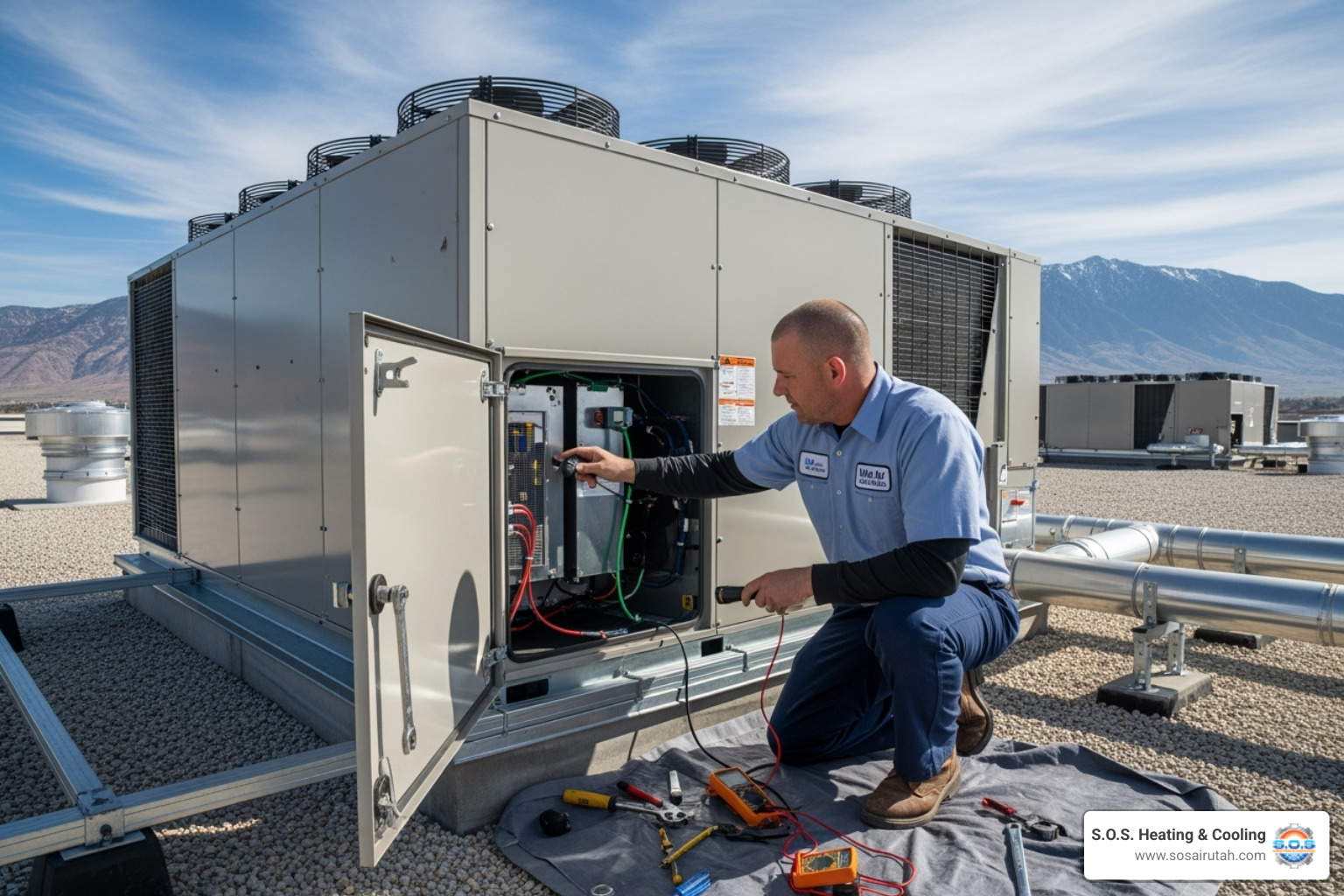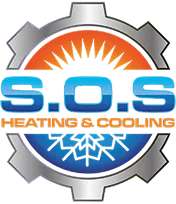
In Kaysville, keeping your home cool during the late summer months can be a challenge when your AC system doesn’t work the way it should. One frequent issue that causes poor cooling performance is refrigerant floodback. This problem happens inside the system but can affect how comfortable your home feels every day. If left unaddressed, it can also shorten the life of your air conditioning unit and increase the chances of a major repair.
Refrigerant floodback may not be a term most homeowners in Kaysville hear often, but recognizing the signs and knowing its effects can help prevent serious damage. Tackling this issue early keeps your AC system operating more reliably and keeps summer temperatures from making your home uncomfortable. Understanding what causes it and how it appears is the first step in protecting your equipment and your home comfort.
What Is AC Refrigerant Floodback?
Refrigerant floodback is a condition where liquid refrigerant flows backward into the compressor of your AC system. Normally, refrigerant should enter the compressor as a gas. When it flows as a liquid, it can’t be compressed properly. This leads to stress on internal parts, which may cause damage to the compressor, one of the most expensive components in your system.
Homeowners in Kaysville dealing with floodback often notice that their cooling system isn’t running as efficiently. The AC might still turn on, but it won’t cool the house like it used to. In some cases, you might hear strange noises coming from the outdoor unit, such as a knocking or gurgling sound. These are red flags.
Here are a few common signs that could point to refrigerant floodback:
- The AC is running, but your home feels warm even on cool settings
- The outdoor unit is making odd noises during operation
- Your energy bills are rising without increased usage
- The compressor shuts down or struggles to start
- There’s frost or ice near the evaporator coil
Each of these symptoms might have different causes, but when more than one happens at the same time, refrigerant floodback is worth considering. Ignoring these signs can lead to system damage and more invasive repairs down the road.
Common Causes of Refrigerant Floodback
Several issues within your system can lead to refrigerant floodback. While the problem sounds technical, it often starts with basic factors that build up slowly over time, especially when regular maintenance is overlooked. The way the components interact plays a big role.
Here are a few common causes to consider:
1. Refrigerant overcharge – Too much refrigerant in the system prevents it from turning to gas properly before it enters the compressor.
2. Faulty expansion valve – If this valve doesn't release refrigerant correctly, the resulting flow can send liquid refrigerant back toward the compressor.
3. Evaporator coil problems – When the coil is blocked or malfunctioning, it can’t vaporize the refrigerant as it should, sending liquid downstream.
4. Low airflow across the evaporator – If the air filter is dirty or the blower motor isn’t working right, it can reduce airflow, disrupting the refrigerant cycle.
5. Misaligned refrigerant piping – Poor installation or damaged piping can tilt the system outside its proper operating balance.
For example, one homeowner in Kaysville scheduled AC maintenance after noticing warm airflow from their vents. Our technicians found that the expansion valve wasn’t metering refrigerant accurately, and liquid was backing up into the compressor. Addressing the root cause not only restored performance but also helped avoid a full compressor replacement.
Taking the time to understand where floodback starts makes it easier to explain symptoms to a technician. The causes are often connected, and spotting them early is key to avoiding larger problems.
Diagnosing Refrigerant Floodback Problems
Spotting refrigerant floodback early can save time, money, and stress later. But since many of its symptoms overlap with other AC system problems, it can be difficult to accurately pinpoint the cause without a proper inspection. Homeowners in Kaysville should keep a close eye on performance changes and schedule service as soon as something seems off.
To help identify refrigerant floodback, look for these signs:
- Unusually warm air coming from the vents when the system is set to cool
- New or unusual sounds like rattling, bubbling, or clicking from the outdoor unit
- Ice buildup around the evaporator coil or refrigerant lines
- The compressor struggling to turn on or shutting off unexpectedly
- Increased energy usage even with the same thermostat settings
If these problems are happening together, it points to a possible refrigerant issue. While homeowners can notice symptoms, diagnosing the exact cause should be left to trained professionals. Floodback isn’t always obvious and the system needs specialized tools for accurate testing. Checking refrigerant pressures, inspecting expansion valves, and verifying coil performance are all part of a detailed service visit.
Trying to troubleshoot on your own can lead to incorrect fixes and more problems later. HVAC systems are sealed and contain chemicals under pressure, making it risky to open or adjust components without experience. A certified technician can safely confirm if floodback is the problem and outline the proper next steps to fix it.
Professional Solutions for Resolving Refrigerant Floodback
Once floodback is confirmed, our professionals use several methods to stop the problem and protect the AC system from further damage. The repair strategy depends on what caused the issue in the first place. Sometimes it’s a simple fix, other times it involves a few different parts working together to restore performance.
Here’s how our technicians typically handle refrigerant floodback:
1. Check and adjust refrigerant levels – Removing excess refrigerant or recharging low levels helps balance the system.
2. Replace faulty expansion valves – If the metering process isn't working right, a new valve improves refrigerant flow.
3. Clean or replace evaporator coils – Dirty or damaged coils can’t function properly and may need repair.
4. Fix airflow problems – This includes replacing dirty filters, repairing blower motors, or clearing blockages that slow down air circulation.
5. Inspect refrigerant lines – Realigning or repairing pipes ensures the refrigerant flows in the right direction.
6. Test system after repairs – Once the fix is complete, technicians perform test cycles to confirm that the system starts, runs, and shuts off the way it should.
A homeowner in Kaysville recently noticed their AC would cool for a few minutes, then shut off. They also heard loud clicking sounds near their outdoor unit. After a service visit, it turned out the refrigerant levels were too high and the expansion valve wasn’t opening correctly. Our team adjusted both and the compressor ran smoothly again without damage.
Ensuring Long-term Efficiency of Your AC System
The most effective way to avoid refrigerant floodback in your Kaysville home is by scheduling regular maintenance. Even if your AC system seems to be working well, hidden problems can develop slowly and cause bigger issues later. A professional tune-up can catch these problems before they take a toll on the system.
Routine maintenance includes checking refrigerant levels, cleaning coils, replacing air filters, and testing for any system imbalances. These simple steps help keep refrigerant moving the way it should and reduce stress on the compressor. It also helps pinpoint early warning signs so repairs can be made before a breakdown happens.
Floodback rarely causes problems overnight. It tends to build slowly when airflow gets blocked or components wear out. Ongoing inspections help you stay ahead of those issues and avoid emergency repairs during the hotter days of late summer.
Keeping your cooling system in good shape doesn’t have to be complicated. With regular care and expert support, homeowners in Kaysville can prevent refrigerant floodback, improve overall AC performance, and stay comfortable through the rest of the season. Paying attention to early warning signs and acting quickly when they appear keeps costs down and avoids added stress.
If you have noticed signs of refrigerant floodback and want to keep your cooling system running smoothly, scheduling regular AC maintenance in Kaysville can help prevent small issues from turning into costly repairs. Trust S.O.S. Heating & Cooling to address potential problems early and maintain consistent comfort throughout your home. For a quick estimate or to book a service visit, please contact us today.
Explore Our Latest Insights and Updates in Plumbing Services

Salt Lake City Home Air Quality: What You Need to Know About Testing

When Your Water Heater Quits: Emergency Repair Solutions for Utah Homes

Stay Productive with Expert Commercial AC Maintenance for Utah Businesses






.avif)